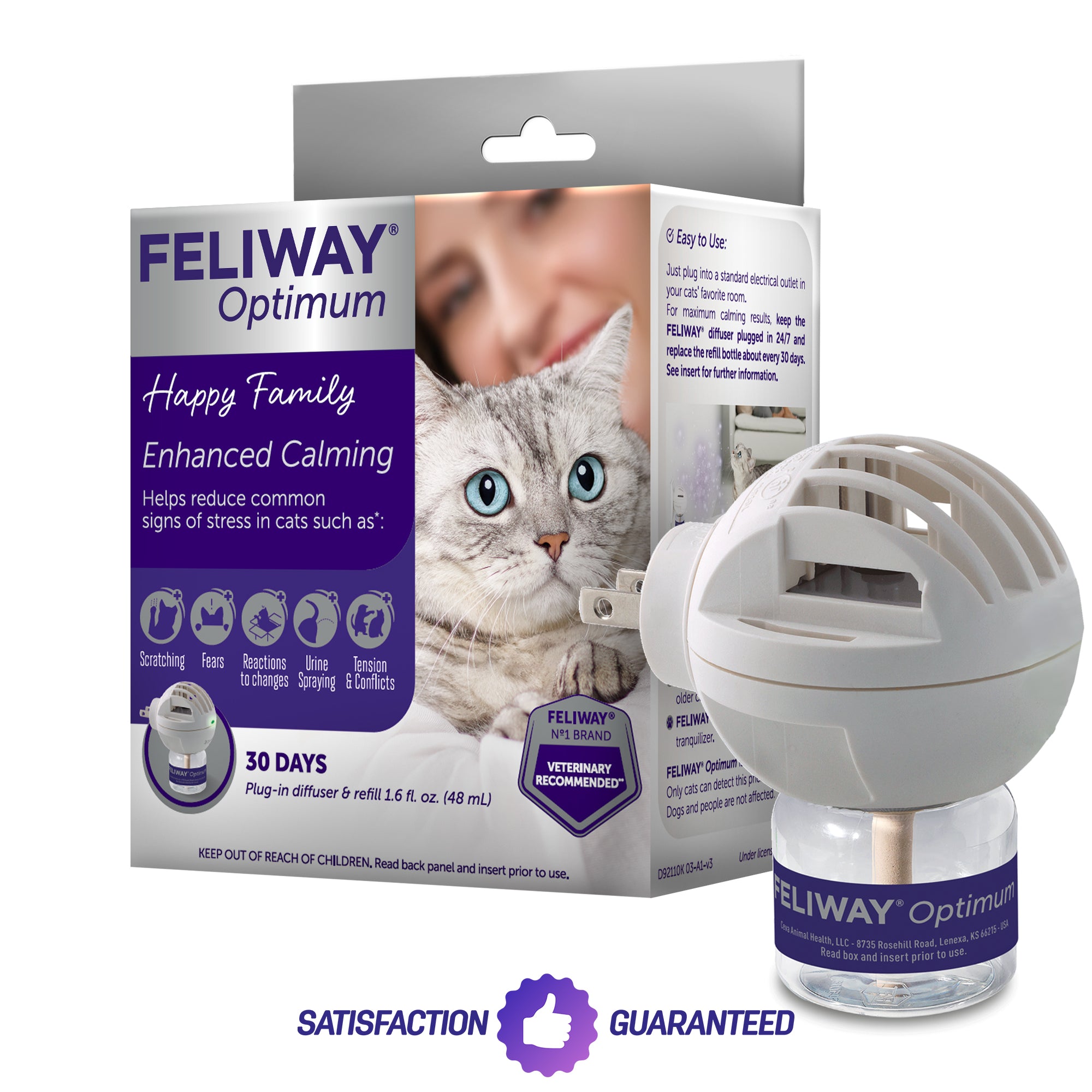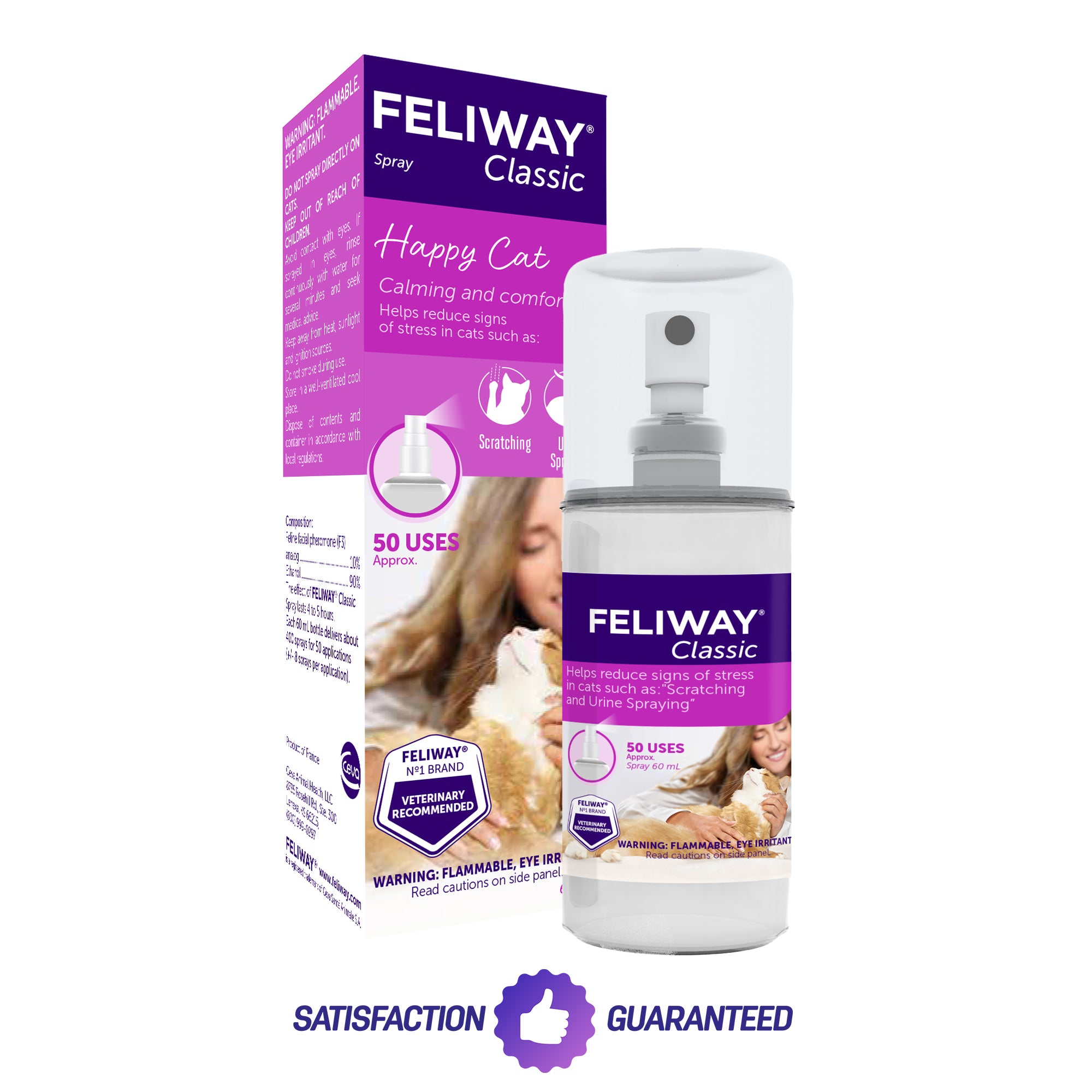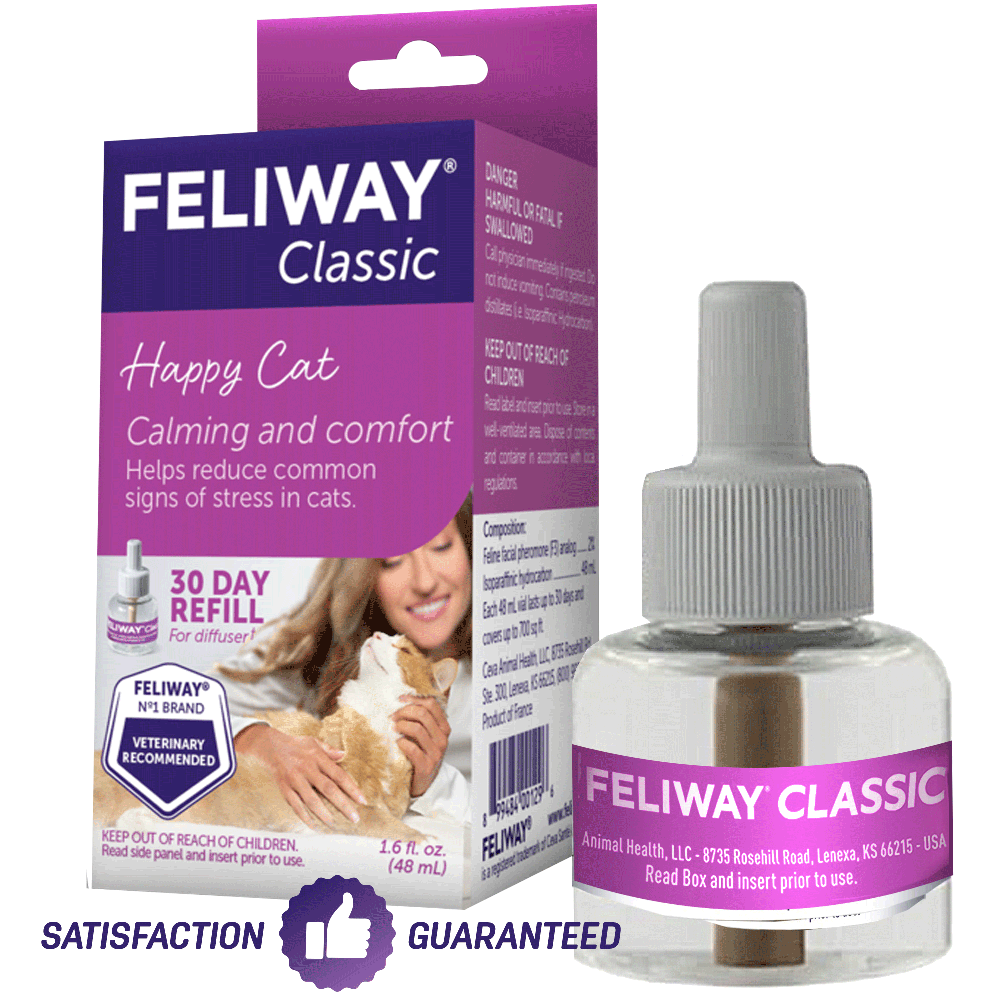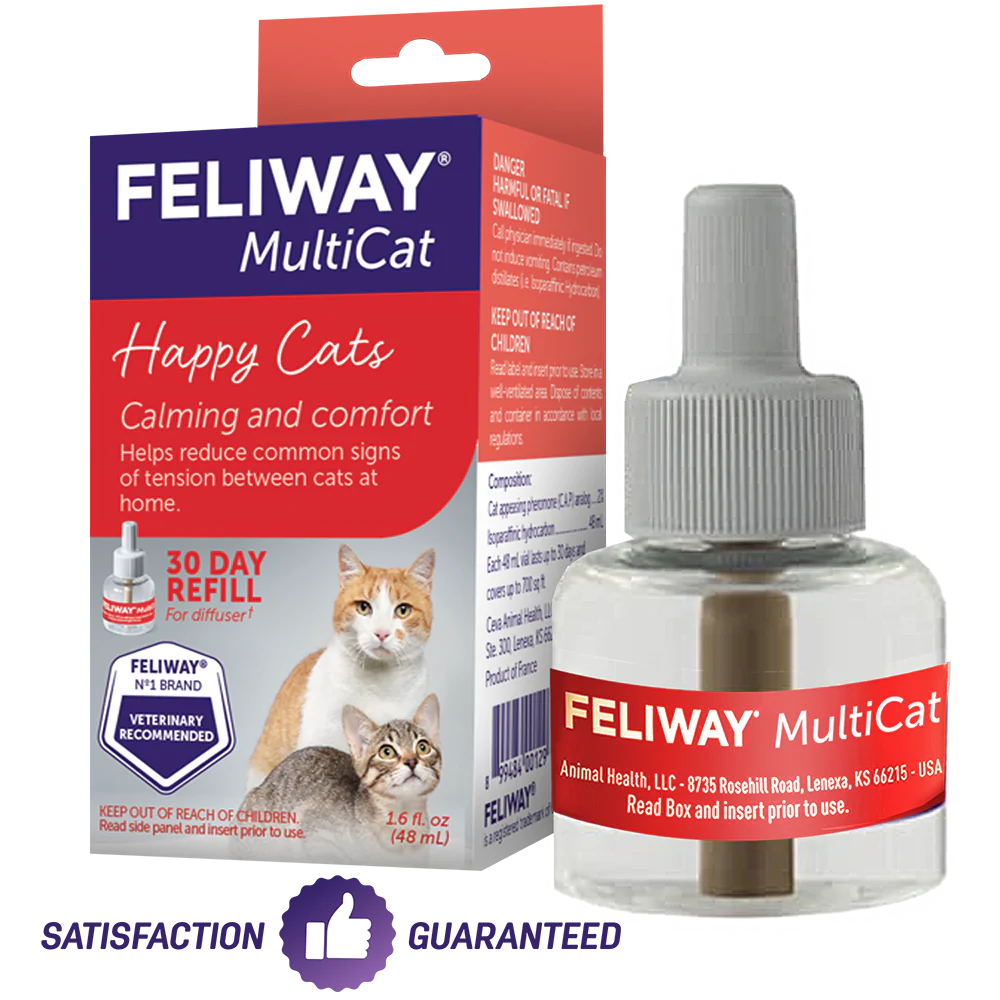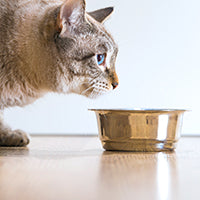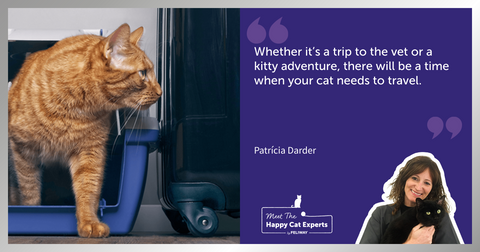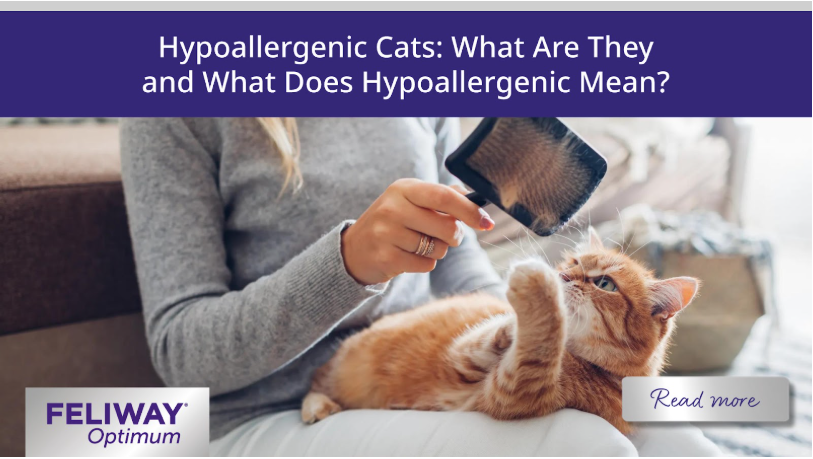
Hypoallergenic Cats: What Are They and What Does Hypoallergenic Mean?
Allergies to cats are the most common animal-related allergy, which can be disheartening for cat lovers who want to enjoy the companionship of a feline friend. So, hypoallergenic cats have become an increasingly popular 'solution' for people with allergies. But are hypoallergenic cats really hypoallergenic? And what does hypoallergenic mean?
We know that sometimes there can be myths online about hypoallergenic cats. So, in this blog, we’ll explain the truth about them and give some of our tips to help manage cat allergies.
What Does Hypoallergenic Mean?
The term 'hypoallergenic' can be used for something that contains fewer allergens and is less likely to trigger an allergic reaction. There is a misconception that hypoallergenic means allergy-free, but unfortunately this isn’t the case. It means that something has a smaller chance of causing an allergic reaction, but there isn’t a 100% certainty that it won’t.
What Are Hypoallergenic Cats?
Contrary to popular belief, the primary allergen of cats is not their fur. Instead, it’s in a protein called “Fel d 1”, which is found in their saliva or secreted onto their skin. All cats produce “Fel d 1” in their fur, saliva, and urine, but hypoallergenic breeds produce lower levels. So, hypoallergenic cats are not cats with less fur; they are cats with fewer proteins that trigger allergies.

What Are the Signs of a Cat Allergy?
Globally, around 1 in 5 adults have a response to cat allergens. When cats groom themselves, they spread the “Fel d 1” protein in their saliva onto their fur and skin, which is then carried into the environment through dander and dead hairs. All cats produce “Fel d 1” regardless of breed, age, and gender, but every cat is different, so the level of “Fel d 1” they produce will vary.
People with cat allergies have immune systems that overreact to these proteins, causing symptoms such as:
-
Sneezing and runny nose
-
Itchy skin or eyes
-
Flare-ups of eczema
-
Coughing or wheezing
Some people will only have a few of these symptoms, but others may develop them all. The severity of the symptoms can depend on an individual’s sensitivity and level of exposure. Cat allergies can be quite common, but these symptoms can also be caused by other allergens, so consult your GP for professional advice.
Are Hypoallergenic Cats Real?
Unfortunately, no cat breed is completely hypoallergenic. All cats produce the protein allergen that can cause an allergic reaction. The “Fel d 1” protein is sticky and attaches itself to any surface, remaining there for a long time. This makes it difficult to avoid if you have a cat allergy.
Although there is no such thing as a hypoallergenic cat, if you are allergic to cats, don’t lose hope! If your allergy isn’t too severe, there are still ways you and a feline friend can live successfully together. Some cat breeds are thought to produce fewer allergens or shed less, which can be easier for someone with an allergy to tolerate.

What Cat Breeds Are 'Hypoallergenic'?
While there are no completely hypoallergenic cat breeds, there are some breeds that are thought to cause fewer symptoms in allergy sufferers. Some of these cat breeds include:
-
Siberian
-
Balinese
-
Russian Blue/White
-
Tonkinese
-
Javanese
When choosing a specific breed, consider spending some time with cats from that breed or litter to see how you react, as there is no scientific proof as to which breeds have fewer protein allergens. It’s also important to always do your research about the breed to check they will fit into your lifestyle and expectations for a furry friend.
Tips for Coping with Cat Allergies
If you suffer with a cat allergy, it doesn’t necessarily mean that you can never have a cat as a companion. There are things you can do to manage cat shedding and the spread of “Fel d 1” proteins. Although there are no cats that don’t produce allergens, if you have a cat that fewer allergens or sheds less, there are ways to cope:
Regular Grooming
-
Brush your cat frequently – Brushing your cat as part of their daily care routine can help reduce loose hair and dander.
-
Groom outside – Having your cat’s grooming sessions outside helps to manage the spread of allergens in your home.
- Help from others – If you’re unable to groom your cat, there may be someone else in your home who can take on the responsibility, or you can consider professional grooming services.

Home Environment
-
Vacuum and clean regularly – Frequent cleaning can help remove allergens from your home. Using a vacuum with a HEPA filter on the areas your cat likes the most allows the allergens to be trapped.
-
Air purifiers – Consider using air purifiers with HEPA filters to reduce airborne allergens.
-
Create designated cat areas – Have certain areas of your home, like bedrooms, as cat-free zones to reduce allergen exposure.
-
Wash your cat’s items – Wash your cat’s bedding regularly, as well as their toys, and of course their food and water stations.
-
Regular baths – Although many cats hate water, if your cat doesn’t mind them, bathing can help reduce the amount of dander on your cat's skin. This is only a short-term effect, but it may help. If you do bathe them, make sure to use a gentle cat shampoo that is designed for their skin and try and make the experience as cat friendly as possible. Training your cats to be comfortable with the different elements involved in bathing can help them feel more at ease before starting this routine. Using rewards as you go can also help make it a more positive experience!
Managing Contact
-
Discourage your cat from licking you – Try and avoid being licked by your cat as allergens are found in their saliva.
-
Wash your hands and clothes after contact – Clean your hands and change your clothes after close contact with the furry friend to reduce your contact with the allergen.
If you’re an allergy sufferer, we recommend consulting your doctor for personalized advice and potential treatments. If your symptoms stay unmanageable, the difficult decision to find an alternative home for your cat may be the best way forward. If this is the case, contact your local rehoming center for advice and next steps.
For more information about what cat breeds are hypoallergenic, be sure to explore all our articles online. Or to receive the latest news straight into your inbox, sign up to our newsletter, and we’ll keep you in the loop with all the latest FELIWAY® guides and info.
